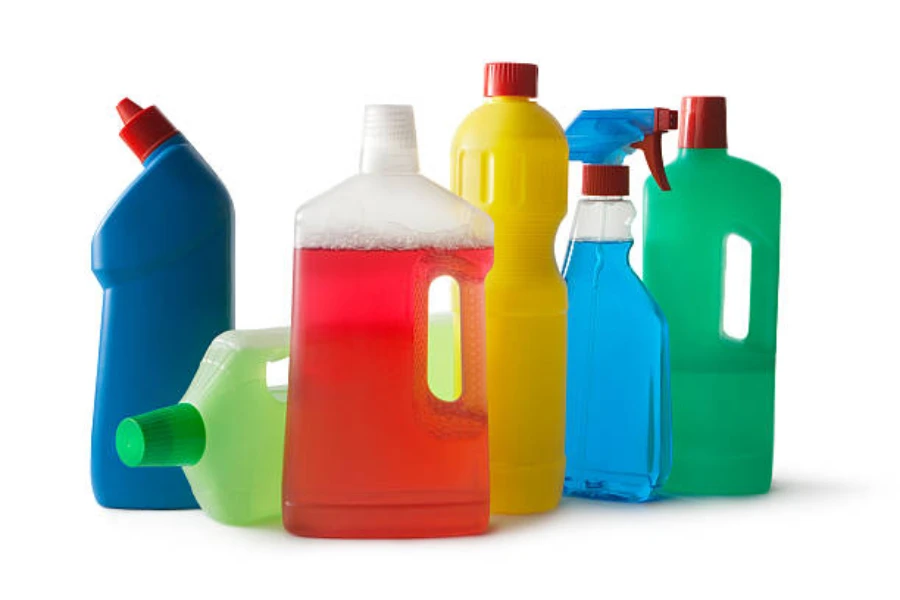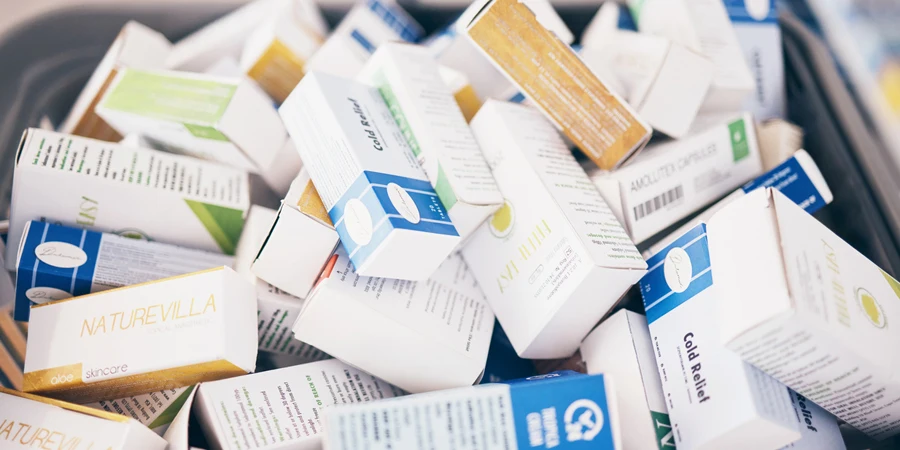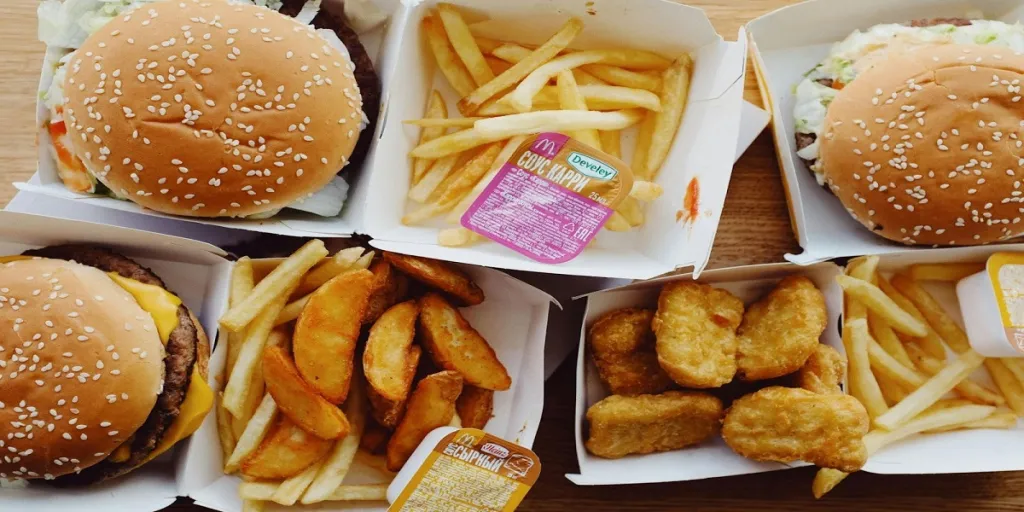Plastic presents a more effective option when compared to other packaging materials. Instead of using above forty pounds of glass to transport beverages or more, businesses can get the job done with two pounds of plastic.
The difference is clear! And brands can save costs by investing in plastic. Here are five notable plastic packaging trends to consider.
Table of Contents
An overview of the plastic packaging market
6 plastic packaging trends changing the market
Final words
An overview of the plastic packaging market
The last few decades have witnessed a sharp rise in the use of plastic globally. According to research, experts estimate the world’s plastic use to be 460 million metric tons. Interestingly, the packaging industry holds the dominant position, accounting for over 31% of the total estimate.
Plastics can pack almost anything, including liquids, powders, solids, and semi-solids. For this reason, various industries prefer them over other alternatives like paper, metal, and glass.
As demands for fresh foods, perishable goods, and other similar products keep increasing, retailers are adopting more organized, lightweight, and flexible packaging options. For this reason, the plastics segment enjoys a steady expansion rate.
Despite the increasing concerns about the environmental hazards of plastic packaging, the market still presents an effective way to secure goods during dispatch. Regardless, traditional packaging may replace plastics if the recycling rates do not improve.
In 2021, experts value the plastic packaging market at $355 billion. They expect the industry to grow at a CAGR of 4.2% CAGR from 2022 to 2030. Also, the global sustainable plastic packaging market is projected to reach almost $130 billion by 2026, showing that bioplastics will significantly impact the plastic packaging market.
Thus, businesses should adopt these innovations to increase their penetration in respective industries and meet the needs of their consumers while reducing waste.
6 plastic packaging trends changing the market
Biodegradable plastic packaging

Biodegradable plastic is slowly taking over the packaging market as more retailers shift toward eco-friendly solutions. This synthetic compound can decompose over time through biological means and turn into carbon dioxide, water, and biomass.
This unique polymer’s ability to degrade naturally gives it an edge over other plastics, making it one of the best options for packaging. Some types include polylactic acid (PLA), cellulose-based plastics, polyhydroxyalkanoates (PHAs), and plant starch blends.
It only takes between three to six months for biodegradable plastics to decompose—with constant exposure to light or oxygen. In contrast, it takes regular polymers about a thousand years to reach the same level of degradation.
Although biodegradable plastics can replace conventional polymers in every category, their higher costs prevent most businesses from swapping packaging.
Regardless, biodegradable polymers are widespread in food packaging. Some common examples include carry-out bags, takeout containers, and coffee cups.
Businesses can also invest in biodegradable plastic bags. Manufacturers often use these synthetic polymers to create shopping bags, packaging, and other single-use bags.
Polypropylene (PP) plastic
Polypropylene is a tough, rigid, crystalline thermoplastic made from propene monomer. Although it is slightly hard, polypropylene is one of the lightest thermoplastics. Plus, it offers low density, high heat resistance, and water-repellent properties.
Manufacturers use various techniques to make polypropylene. They can make the plastic neat, reinforced with natural fibers, or with short and long glass fibers. Other techniques include blow molding and sheet thermoforming.
PP is ideal for many packaging applications due to its superior optical clarity, low moisture-vapor transmission, good barrier properties, high strength, good surface finish, and affordability. Businesses can use it for products in food, health, personal care, medical and labware categories. Interestingly, they can use polypropylene to package many other products.
Although it is completely recyclable and has good chemical resistance, polypropylene is susceptible to attack from highly oxidizing solvents and microbes.
Polypropylene plastic works especially well in the food industry. It can be used for food-grade containers like medicine bottles, yogurt cups, and margarine tubs.
Polyvinyl chloride (PVC) plastic
Polyvinyl chloride, also known as PVC or vinyl, is the third-largest thermoplastic substance in the world by volume, next to polyethylene and polypropylene. It is a solid and brittle substance that comes in granules or powder form.
Additionally, PVC is lightweight, cost-effective, and highly adaptable, allowing businesses to package products without fear. Interestingly, polyvinyl chloride packaging is resistant to biological and chemical damage.
Although PVC is mostly flexible or rigid, businesses can purchase other types like chlorinated polyvinyl chloride (CPVC), molecular-oriented PVC, and modified variants (usually designed for specific applications).
Businesses can use PVC plastic packaging for tamper-proof medications, clamshells, heavy-duty packaging bags, and shrink wrapping.
PVC is the least eco-friendly plastic packaging material as residual matters are toxic to humans, animals, and the environment. However, it makes excellent building and construction materials after recycling.
Interestingly, retailers can use PVC films as stretch and shrink wraps for consumer and industrial goods. They may also work as pallet wraps.
High-density polyethylene (HDPE) plastic

High-density polyethylene, or HDPE, is a very versatile plastic with many applications—from making pipes to storage bottles. It is also well-known for its exceptional tensile strength and high strength-to-density ratio.
In addition, HDPE’s high malleability makes it one of the most pliable plastic materials available. Most manufacturers use it to make milk jugs, shampoo bottles, cutting boards, and other plastic bottles.
Its rigid strength, corrosion- and impact- resistance, and high melting point make it excellent for underground piping. HDPE also makes sturdy containers for solvents, acids, cleaning agents, and a majority of chemicals.
HDPE is an effective alternative to heavier packaging materials and is suitable for businesses looking for strength and environmental-friendliness in one plastic package.
The most common use for HDPE plastic is storage bottle production. These bottles can host several liquids, including milk, conditioners, motor oil, bleaches, and shampoos.
Polyethylene terephthalate (PETE) plastic
Polyethylene terephthalate, also known as PETE, or PET, is incredibly popular for producing beverage bottles. The plastic features unrivaled clarity, strength, and high moisture-gas barrier quality. Moreover, PET plastic is impact resistant.
This lightweight plastic does not react to food or drinks and is immune to attacks from microorganisms. PETE will not deteriorate biologically like glass but is shatterproof and more transportable.
Businesses can use PET plastics to package drinks, water, salad dressings, ketchup, and other liquid or semi-liquid products. Some solid products are also compatible with PETE plastic packaging.
What’s more? The FDA approved PETE plastic for food contact, and it is highly sustainable and fully recyclable. However, the plastic has low impact strength and is weak to damage from heat and strong chemicals.
PET plastics can create bags for packaging cosmetics and other personal care products. Plus, retailers can easily customize their packages with prints and images. Sellers can also use PET plastic packaging for baked goods.
Water-soluble plastic
Another example of a great biodegradable polymer is water-soluble plastic. As the name implies, this synthetic blend decomposes quickly when it contacts boiling water.
Made without toxic heavy metals, water-soluble plastics work like wrapping films present on laundry tablets or dishwashers. Currently, this biodegradable plastic is making waves in the apparel industry as many manufacturers use it to craft highly-effective garment bags.
Final words
Plastic packaging provides an excellent way to store products before they reach the final consumer. Businesses can cut down costs and secure their goods by using various plastic packaging trends.
Biodegradable plastic, polypropylene, polyvinyl chloride, high-density polyethylene, water-soluble plastic, and polyethylene terephthalate are the plastic packaging trends to focus on.








